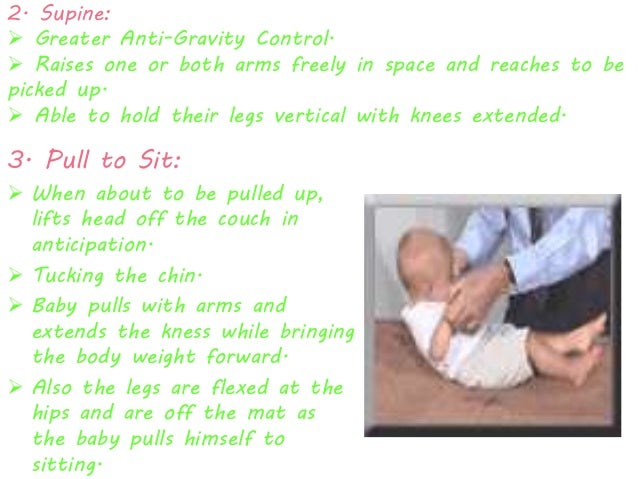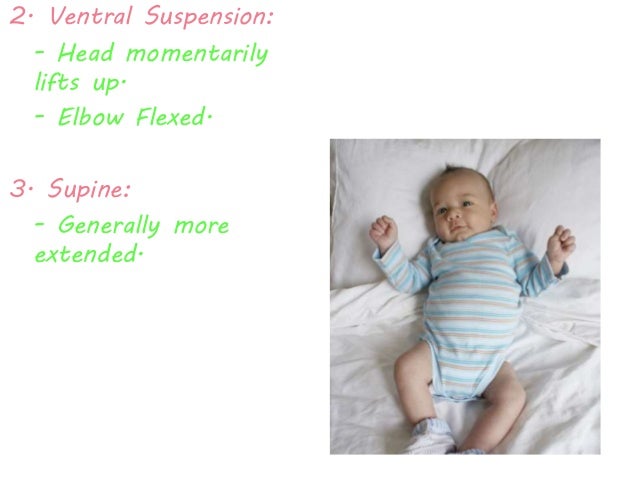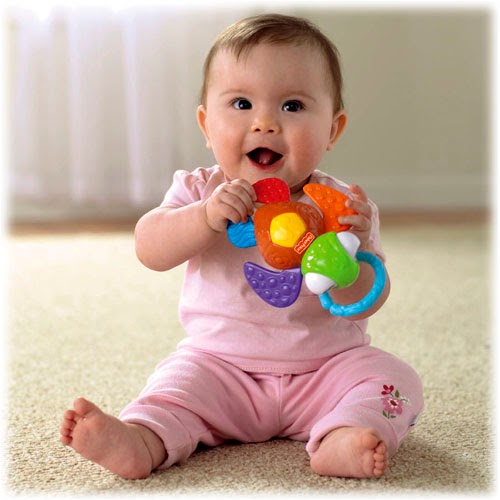Gross Motor Development
Gross Motor Development-
Motor development progresses in an orderly sequence to ultimate attainment of locomotion and more complex motor tasks thereafter.
Supine and pull to sit -
- The infant is observed in supine and then gently pulled to sitting position. Control of head and curvature of the spine is observed. In the newborn period, the head completely lags behind and back is rounded starting at 6 weeks

- The head control develops and by 12 weeks there is only a slight head lag.
- The child has complete neck control by 20 weeks. This can be ascertained by swaying him gently 'side-to-side' when sitting. At this age, the baby loves to play with his feet, and may take his foot to mouth as well.
- Infant lifts head from the supine position when about to be pulled at 5 months.
Ventral suspension -
- The child is held in prone position and then lifted from the couch, with the examiner supporting the chest and abdomen of the child with the palm of his hand. Up to 4 weeks of age, the head flops down.


- At 6 weeks, the child momentarily holds head in the horizontal plane and by 8 weeks, he can maintain this position well.
- By 12 weeks, he can lift his head above the horizontal plane.
Prone position-
- At birth or within a few days, the newborn turns the head to one side. At 2 weeks, the baby lies on the bed with high pelvis and knees drawn up.
- At 4 weeks, the infant lifts the chin up momentarily in the midline.
- The infant lies with flat pelvis and extended hips at 6 weeks.
- By 8 weeks, face is lifted up at 45° and by 12 weeks, the child can bear weight on forearms with chin and shoulder off the couch and face at 45°.

- At 6 months, he can lift his head and greater part of the chest while supporting weight on the extended arms.
- By the age of 8 months, he crawls (with abdomen on the ground) and by 10 months, creeps (abdomen off the ground, with weight on knees and hands)

Sitting-
- By the age of 5 months, the child can sit steadily with support of pillows or the examiner's hands.
- At first the back is rounded but gradually it straightens. He independently sits with his arms forward for support (tripod or truly 'sitting with support') by the age of 6-7 months.
- Steady sitting without any support generally develops at around 8 months.

- By 10-11 months, he can pivot in sitting position to play around with toys.
Standing and walking-
- By 6 months, the child can bear almost all his weight when made to stand.
- At 9 months, the child begins to stand holding onto furniture and pulls himself to standing position. By 10 and 11 months, the child starts cruising around furniture.
- At about 12-13 months the child can stand independently and can walk with one hand held.
- Between the ages of 13 and 15 months the child starts walking independently.
- He runs by 18 months and at this age he can crawl up or down stairs and pulls a doll or wheeled toy along the floor.
- By 2 yr. the child can also walk backwards. He climbs upstairs with both feet on one step at 2 yr.
- By 3 yr. he can climb upstairs with one foot per step and by 4 yr. he can move down the stairs in the same fashion.
- He can ride a tricycle at 3 yr. He can hop at 4 yr. and skip at 5 yr.
